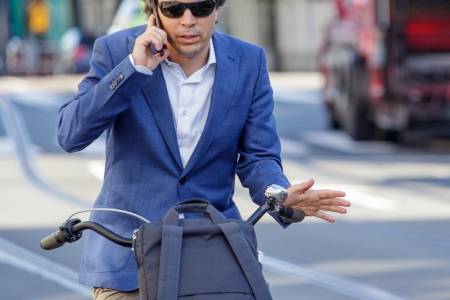In May 2017, Accident Analysis and Prevention (AAP) published the article Mobile phone conversations, listening to music and quiet (electric) cars: Are traffic sounds important for safe cycling?. Among the authors are SWOV experts Agnieszka Stelling, Jacques Commandeur and Marjan Hagenzieker.
Smartphones are used in traffic on a regular basis and a growing number of quiet (electric) cars can be seen on our roads. Both can make the use of auditory cues challenging for cyclists. The study that was published in AAP examines to what extent and in which traffic situations traffic sounds are important for safe cycling and also investigates the potential hazards of limited auditory information caused by quiet (electric) cars and by cyclists listening to music or talking on the phone. The study consisted of a survey among 2249 cyclists in three age groups: 16–18, 30–40 and 65–70 year olds.
The study found that listening to music and talking on the phone have a negative effect on hearing the sounds that are crucial for safe cycling. No relation was found, however, between the frequency of smartphone use and the frequency of incidents among teenage cyclists. Although listening to music or talking on the phone and limited auditory input of quiet electric cars may still pose a risk, the absence of the relation could be due to cyclists’ compensating for the lack of auditory information. Decreasing speed, keeping conversations short and looking around were the most often reported compensatory strategies for talking on the phone.

